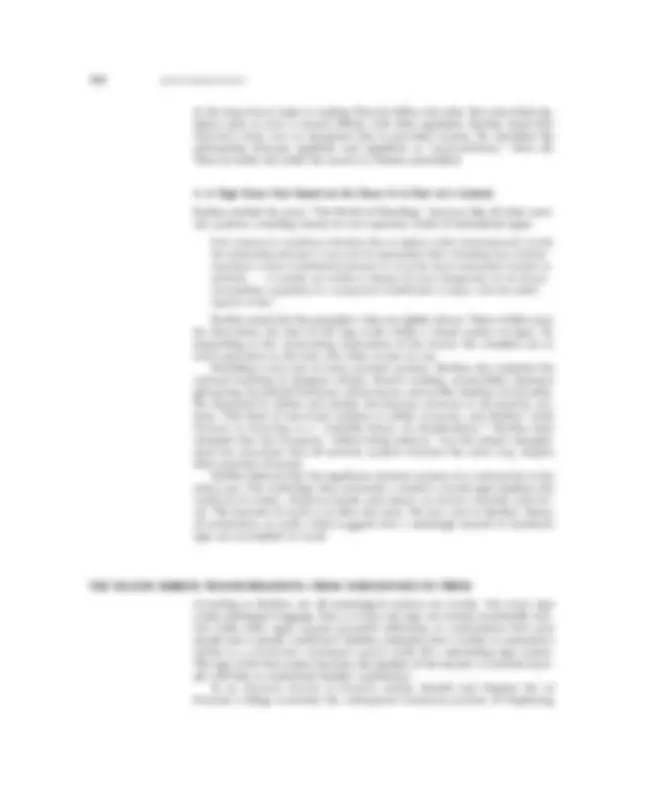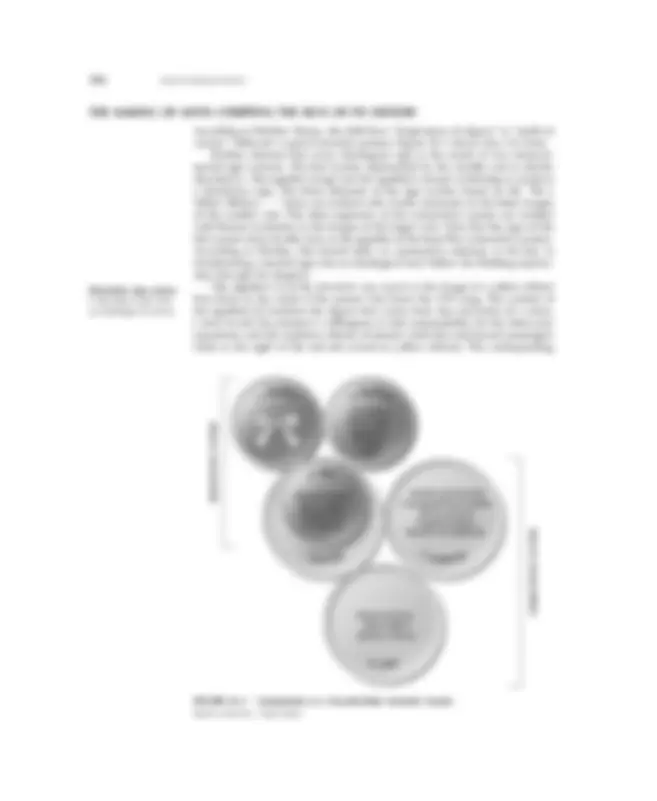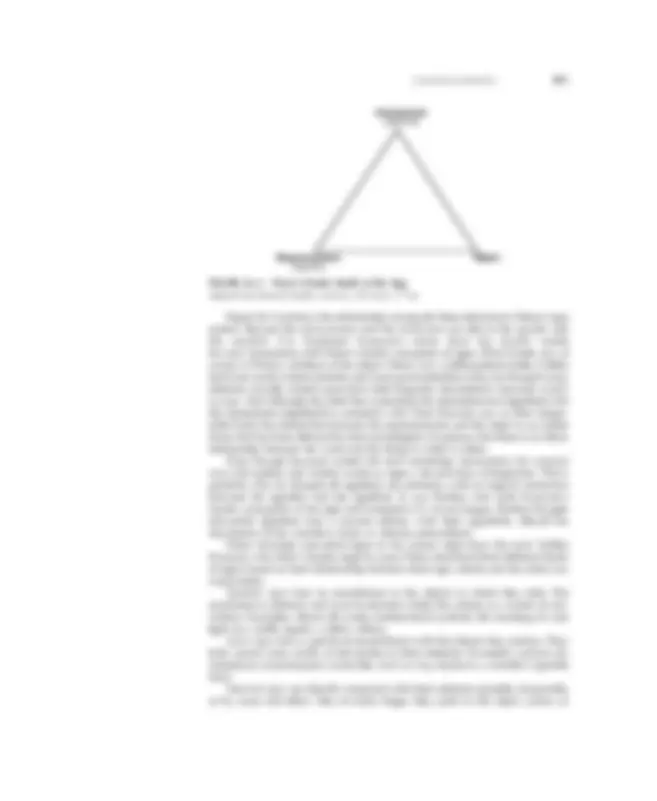








Study with the several resources on Docsity

Earn points by helping other students or get them with a premium plan


Prepare for your exams
Study with the several resources on Docsity

Earn points to download
Earn points by helping other students or get them with a premium plan
Community
Ask the community for help and clear up your study doubts
Discover the best universities in your country according to Docsity users
Free resources
Download our free guides on studying techniques, anxiety management strategies, and thesis advice from Docsity tutors
The connotative meaning that signs carry wherever they go; myth makes what is cultural seem natural. Sign. The inseparable combi- nation of the signifier and ...
Typology: Study notes
1 / 12

This page cannot be seen from the preview
Don't miss anything!







French literary critic and semiologist Roland Barthes (rhymes with “smart”) wrote that for him, semiotics was not a cause, a science, a discipline, a school, a movement, nor presumably even a theory. “It is,” he claimed, “an adventure.” 1 The goal of semiotics is interpreting both verbal and nonverbal signs. The verbal side of the field is called linguistics. Barthes, however, was mainly interested in the nonverbal side—multifaceted visual signs just waiting to be read. Barthes held the chair of literary semiology at the College of France when he was struck and killed by a laundry truck in 1980. In his highly regarded book Mythologies , Barthes sought to decipher the cultural meaning of a wide variety of visual signs—from sweat on the faces of actors in the film Julius Caesar to a magazine photograph of a young African soldier saluting the French flag. Unlike most intellectuals, Barthes frequently wrote for the popular press and occasionally appeared on television to comment on the foibles of the French middle class. His academic colleagues found his statements witty, dis- turbing, flashy, overstated, or profound—but never dull. He obviously made them think. With the exception of Aristotle, the four-volume International Ency- clopedia of Communication refers to Barthes more than to any other theorist in this book. 2 Semiology (or semiotics, as it is better known in America) is concerned with anything that can stand for something else. Italian semiologist and novelist Umberto Eco has a clever way of expressing that focus. Semiotics, he says, is “the disci- pline studying everything which can be used in order to lie, because if some- thing cannot be used to tell a lie, conversely it cannot be used to tell the truth; it cannot, in fact, be used to tell at all.” 3 Barthes was interested in signs that are seemingly straightforward but that subtly communicate ideological or connota- tive meaning and perpetuate the dominant values of society. As such, they are deceptive. Barthes was a mercurial thinker who changed his mind about the way signs work more than once over the course of his career. Yet most current practitioners of semiotics follow the basic analytical concepts of his original theory. His approach provides great insight into the use of signs, particularly those chan- neled through the mass media.
Semiotics (semiology) The study of the social production of meaning from sign systems; the analysis of anything that can stand for something else.
Objective Interpretive
Semiotic tradition
●
Barthes initially described his semiotic theory as an explanation of myth. He later substituted the term connotation to label the ideological baggage that signs carry wherever they go, and most students of Barthes’ work regard connotation as a better word choice to convey his true concern. Barthes’ theory of connotative meaning won’t make sense to us, however, unless we first understand the way he viewed the structure of signs. His think- ing was strongly influenced by the work of Swiss linguist Ferdinand de Saussure, who coined the term semiology and advocated its study.^4 To illustrate Barthes’ core principles I’ll feature portions of his essay on professional wrestling entertainment.
The distinction between signifier and signified can be seen in Barthes’ graphic description of the body of a French wrestler who was selected by the promoter because he typified the repulsive slob: As soon as the adversaries are in the ring, the public is overwhelmed with the obvi- ousness of the roles. As in the theatre, each physical type expresses to excess the part which has been assigned to the contestant. Thauvin, a fifty-year-old with an obese and sagging body... displays in his flesh the characters of baseness.... The physique of the wrestlers therefore constitutes a basic sign, which like a seed contains the whole fight.^5 According to Barthes, the image of the wrestler’s physique is the signifier. The concept of baseness is the signified. The combination of the two—the villainous body—is the sign. This way of defining a sign differs from our customary use of the word. We would probably say the wrestler’s body is a sign of his baseness—or whatever else comes to mind. But Barthes considered the wrestler’s body just part of the overall sign; it’s the signifier. The other part is the concept of hideous baseness. The signifier isn’t a sign of the signified. Rather, they work together in an insep- arable bond to form a unifi ed sign. Barthes’ description of a sign as the correlation between the signifier and the signified came directly from Saussure. The Swiss linguist visualized a sign as a piece of paper with writing on both sides—the signifier on one side, the signified on the other. If you cut off part of one side, an equal amount of the other side automatically goes with it. Using a similar metaphor, I see signs as coins. For example, the image of President John F. Kennedy—the signifier—is stamped on the “heads” side of a large silver coin. It’s only on the flip side of the coin that we learn its value is a half-dollar—the signified. The signifier and the signified can’t be separated. They are combined in our common reference to that monetary sign—a Kennedy half-dollar. Is there any logical connection between the image of the signifier and the content of the signified? Saussure insisted the relationship is arbitrary—one of correlation rather than cause and effect. Barthes wasn’t so sure. He was willing to grant the claim of Saussure that words have no inherent meaning. For exam- ple, there is nothing about the word referee that makes it stand for the third party
Myth The connotative meaning that signs carry wherever they go; myth makes what is cultural seem natural.
Sign The inseparable combi- nation of the signifier and the signified.
Signifier The physical form of the sign as we perceive it through our senses; an image.
Signified The meaning we associ- ate with the sign.
yellow ribbons during the 1980 Iranian hostage crisis.^8 They traced the transfor- mation of this straightforward yellow symbol into an ideological sign. Americans’ lavish display of yellow ribbons during Operation Desert Storm in 1991 and the occupation of Iraq that began in 2003 adds a new twist to the Frys’ analysis. I’ll update their yellow ribbon example to illustrate Barthes’ semiotic theory. “Tie a Yellow Ribbon Round the Ole Oak Tree” was the best-selling pop song of 1972 in the United States. 9 Sung by Tony Orlando and Dawn, the lyrics express the thoughts of a convict in prison who is writing to the woman he loves. After three years in jail, the man is about to be released and will travel home by bus. Fearing her possible rejection, he devises a plan that will give her a way to signal her intentions without the potential embarrassment of a face-to-face confrontation. Since he’ll be able to see the huge oak planted in front of her house when the bus passes through town, he asks her to use the tree as a message board. If she still loves him, wants him back, and can overlook the past, she should tie a yellow ribbon around the trunk of the tree. He will know that all is forgiven and join her in rebuilding a life together. But if this bright sign of reconciliation isn’t there, he’ll stay on the bus, accept the blame for a failed relationship, and try to get on with his life without her. The yellow ribbon is obviously a sign of acceptance, but one not casually offered. There’s a taint on the relationship, hurts to be healed. Donald and Vir- ginia Fry labeled the original meaning of the yellow ribbon in the song as “for- giveness of a stigma.” Yellow ribbons in 1991 continued to carry a “we want you back” message when U.S. armed forces fought in Operation Desert Storm. Whether tied to trees, worn in hair, or pinned to lapels, yellow ribbons still proclaimed, “Welcome home.” But there was no longer any sense of shameful acts to be forgiven or disgrace to be overcome. Vietnam was ancient history and America was the leader of the “new world order.” Hail the conquering heroes. The mood surrounding the yellow ribbon had become one of triumph, pride, and even arrogance. After all, hadn’t we intercepted Scud missiles in the air, guided “smart bombs” into air-conditioning shafts, and “kicked Saddam Hussein’s butt across the desert”? People were swept up in a tide of “yellow fever.” More than 90 percent of U.S. citizens approved of America’s actions in the Persian Gulf. The simple yellow ribbon of personal reconciliation now served as a blatant sign of nationalism. The yellow-ribbon sign functioned the same way for about three years after the 2003 U.S. invasion of Iraq, which was the centerpiece of America’s “War on Terror.” Millions of citizens displayed yellow-ribbon decals and magnets on their cars and trucks that urged all to “Support Our Troops.” The ribbon called up feelings of national pride and memories of the shock-and- awe attack on Baghdad that had squashed immediate resistance; Saddam Hussein had been driven from office, his statue top- pled; democracy was being established; and President George W. Bush had dramatically landed a fighter jet on an aircraft car- rier proclaiming “Mission Accomplished.” The yellow ribbon continued to signify that the soldiers’ return would be joyous, but its message held no sense of shame. What had originally signified forgive- ness of a stigma now symbolized pride in victory.
According to Barthes’ theory, the shift from “forgiveness of stigma” to “pride in victory” followed a typical semiotic pattern. Figure 26–1 shows how it’s done. Barthes claimed that every ideological sign is the result of two intercon- nected sign systems. The first system represented by the smaller coin is strictly descriptive—the signifier image and the signified concept combining to produce a denotative sign. The three elements of the sign system based on the “Tie a Yellow Ribbon.. .” lyrics are marked with Arabic numerals on the three images of the smaller coin. The three segments of the connotative system are marked with Roman numerals on the images of the larger coin. Note that the sign of the first system does double duty as the signifier of the Iraqi War connotative system. According to Barthes, this lateral shift, or connotative sidestep, is the key to transforming a neutral sign into an ideological tool. Follow his thinking step-by- step through the diagram. The signifier (1) of the denotative sign system is the image of a yellow ribbon that forms in the mind of the person who hears the 1972 song. The content of the signified (2) includes the stigma that comes from the conviction of a crime, a term in jail, the prisoner’s willingness to take responsibility for the three-year separation, and the explosive release of tension when the Greyhound passengers cheer at the sight of the oak tree awash in yellow ribbons. The corresponding
Denotative sign system A descriptive sign with- out ideological content.
FIGURE 26–1 Connotation as a Second-Order Semiotic System Based on Barthes, “Myth Today”
DENOTATIVE SYSTEM
CONNOTATIVE SYSTEM
Welcome-home yellow ribbon (forgiveness of stigma)
Guided smart bombs Intercepted Scud missiles Shock and awe Toppled Saddam Mission accomplished
Welcome-home yellow ribbon (pride in victory)
Convicted Prison term Repentant Forgiven Relief
1 .S ignifier
3 .Sign
2 .S ignified
I.SIG NIFIER
II.S IGNIFIED
III.SIGN
don’t defend, and they certainly don’t raise questions. So it’s up to the semiolo- gist to expose or deconstruct the mythic system. Throughout his life, Roland Barthes deciphered and labeled the ideologies foisted upon naïve consumers of images. Although the starting-point signifiers varied, Barthes concluded that society’s connotative spin always ends up the same. Mythic signs reinforce the dominant values of their culture. For example, the wrestling match we examined earlier seems at first glance to be no more than a harmless Saturday night diversion. Under Barthes’ watchful eye, however, it was the site of dangerous mythmaking. He explained that the honorable wrestler’s eventual tri- umph over the rule-breaking villain signifies a make-believe ideology of pure “jus- tice.” The “good guys win” simplicity of the spectacle provides false comfort for an audience that lives in a world of dubious morality and inherent inequality. According to Barthes, ideological signs enlist support for the status quo by trans- forming history into nature—pretending that current conditions are the natural order of things. As with the ribbons and the wrestling match, everything that is personal, conditional, cultural, and temporal disappears. We are left with a sign that makes the world seem inevitable and eternal. Barthes’ analysis calls to mind
Deconstruction The process of unmask- ing contradictions within a text; debunking.
Ideology Knowledge presented as common sense or natu- ral, especially when its social construction is ignored or suppressed.
© Roz Chast/The New Yorker Collection/www.cartoonbank.com
the final words of the “Gloria Patri,” a choral response that many Christians sing in worship: As it was in the beginning, Is now and ever shall be, World without end. Amen. Amen. For believers, singing these words about anything or anyone but God would be unthinkable. Barthes wouldn’t grant even that exception. All his semiotic efforts were directed at unmasking what he considered the heresy of those who con- trolled the images of society—the naturalizing of history.
Like wrestlers and ribbons, most semiotic signs gain cultural prominence when broadcast through the electronic and print media. Because signs—as well as issues of power and dominance—are integral to mass communication, Barthes’ semiotic analysis has become a seminal media theory. As Kyong Kim, author of a book on semiotics, concludes: Information delivered by mass media is no longer information. It is a commodity saturated by fantasized themes. Mass audiences are nothing more than consumers of such commodities. One should not forget that, unlike nature, the media’s reality is always political. The mass signification arising in response to signs pouring from the mass media is not a natural process. Rather it is an artificial effect calculated and induced by the mass media to achieve something else.^12 The advertisements that make commercial television so profitable also create layers of connotation that reaffirm the status quo. During the 1998 NBA playoffs, one of the most frequently aired spots featured Chicago Bulls’ superstar Michael Jordan slam-dunking the basketball over a variety of helpless defenders. He then gulps down Gatorade while a host of celebrity and everyday admirers croon his praises. The most memorable of these adoring fans is a preschool African- American boy, who stares up in awe at the towering Jordan. “Sometimes I dream,” we hear him sing, “that he is me.” He really wants to be like Mike. Obviously, the commercial is designed to sell Gatorade by linking it to the virtually unlimited achievement of basketball’s greatest player. To partake of this liquid is to reach for the stars. In that sense, the little boy, rather than MJ himself, becomes the spot’s crucial sign. Within this denotative system, the youngster’s rapt gaze is the signifier, and his dream of becoming a famous athlete is the signified. The resultant denotative sign—a look of yearning—has the potential to move cartons of Gatorade off the shelf. But as the signifier of a secondary connotative system, it has greater cultural impact. At the connotative level, the original “look of yearning” suggests a new second-order signified—a more general kind of dreaming about one’s future in which the ad’s audience is invited to participate. Viewers are encouraged to wish for careers and goals that are virtually unobtainable, even in the best of circumstances. The CEO of Microsoft, the conductor of the New York Philhar- monic, Hollywood’s most glamorous talent, the president of the United States, and the world’s leading AIDS researcher constitute the lofty heights surveyed by the gaze that the connotative shift implies.
Figure 26–2 portrays the relationship among the three elements in Peirce’s sign system. Because the representamen and the interpretant are akin to the signifier and the signified, I’ve bracketed Saussure’s terms from his dyadic model for easy comparison with Peirce’s triadic conception of signs. What stands out, of course, is Peirce’s addition of the object. Peirce was a philosophical realist. Unlike hard-core social constructionists and most postmodernists today, he thought many referents actually existed apart from their linguistic descriptions. Saussure wasn’t so sure. And although the solid line connecting the representamen [signifier] with the interpretant [signified] is consistent with what Saussure saw as their insepa- rable bond, the dotted line between the representamen and the object is an added factor that has been affirmed by later semiologists. It portrays that there is no direct relationship between the word and the thing to which it refers. Even though Saussure coined the term semiology (semantics), his concern was with spoken and written words as signs—the province of linguistics. That’s probably why he thought all signifiers are arbitrary, with no logical connection between the signifier and the signified. It was Barthes who took Saussure’s dyadic conception of the sign and extended it to visual images. Barthes thought nonverbal signifiers had a natural affinity with their signifieds. (Recall his description of the wrestler’s body as vileness personified.) Peirce included nonverbal signs in his system right from the start. Unlike Saussure, who didn’t classify signs by type, Peirce described three different kinds of signs based on their relationship between their sign vehicle and the other two components. Symbolic signs bear no resemblance to the objects to which they refer. The association is arbitrary and must be learned within the culture as a matter of con- vention. Examples: almost all words; mathematical symbols; the meaning of a red light on a traffic signal; a yellow ribbon. Iconic signs have a perceived resemblance with the objects they portray. They look, sound, taste, smell, or feel similar to their referents. Examples: cartoon art; metaphors; onomatopoeic words like slush or ring; shadows; a wrestler’s ignoble body. Indexical signs are directly connected with their referents spatially, temporally, or by cause and effect. Like an index finger, they point to the object, action, or
Interpretant (Signified)
Representamen (Signifier)
Object
FIGURE 26–2 Peirce’s Triadic Model of the Sign Adapted from Daniel Chandler, Semiotics: The Basics, 2 nd^ ed.
Roland Barthes’ semiotics fulfills five of the criteria of a good interpretive theory (see Chapter 3) exceedingly well. His qualitative analyses of middle-class values and practices are fascinating and well-written. As readers of his essays, we chuckle with new understanding at how consumers of mediated images are taken in, and only belatedly realize that Barthes was describing us. More than most interpretive scholars, Barthes intended that this new realization would inoculate us against being sucked into thinking that life should not, and could not, be altered. He wanted to change the world. When it comes to the good-theory standard of a community of agreement, however, semiotics doesn’t quite deliver. Barthes spoke and wrote for wide audi- ences, so he can’t be accused of presenting his ideas only to true believers. But are connotative systems always ideological, and do they inevitably uphold the values of the dominant class? Many who study the theory are dubious. Perhaps there are significant semiotic systems that suggest divergent perspectives or support alternative voices. To some students of signification, Barthes’ monolithic Marxist approach to mythmaking borders on conspiracy theory. These interpreters are unwilling to accept the idea that all representation is a capitalistic plot, or that visual signs can’t be used to promote resistance to dominant cultural values. University of Pennsylvania political scientist Anne Norton expands Barthes’ semiotic approach to account for other possibilities. For example, she argues that Madonna’s MTV persona signifies an autonomous, independent sexuality that inspires young girls to control—rather than be controlled by—their environment. In effect, Madonna’s “construction of herself as a ‘material girl’ subverts the hierarchies and practices evolved by its dense tissue of references.” 15 In the same vein, UCLA media scholar Douglas Kellner writes that through Madonna’s deliberate manipulation of stereotypes and imagery, female “wannabes” are “empowered in their struggles for individual identity.” Although her provocative outfits and unabashed eroticism may seem at first glance to reinforce traditionally
idea to which they refer. Examples: smoke as a sign of fire; fever as a sign of illness; a wind sock as a sign of the direction and speed of the wind; a wrinkled brow as a sign of confusion. Cinesemiotics, a branch of semiotics that informs filmmaking, draws upon Peirce’s distinctions among signs.^14 Symbolic signs are usually quite obvious— religious films that use the sign of the cross; courtroom dramas that show the scales of justice; adventure thrillers that quickly train audiences to associate a particular musical score with impending disaster. ( Jaws, anyone?) Directors known for realism draw upon signs that index, but film them spar- ingly. They foreground natural scenes and actions rather than scripted images. Their aim is for the film to reveal the world as it is rather than for what it signi- fies. They believe that indexical connections should be captured rather than cre- ated or contrived. That way the movie evokes reality instead of an imaginary world. The film Bicycle Thieves is a classic example of the use of indexical signs. Expressionistic directors use iconic signs to create a fantasy world of their own choosing. When artfully done, the choices they make present an interpretation of life that’s difficult for viewers to resist. The film Avatar did this well. Not many viewers left the theater convinced that the need for minerals justified displacing or dispatching human beings.